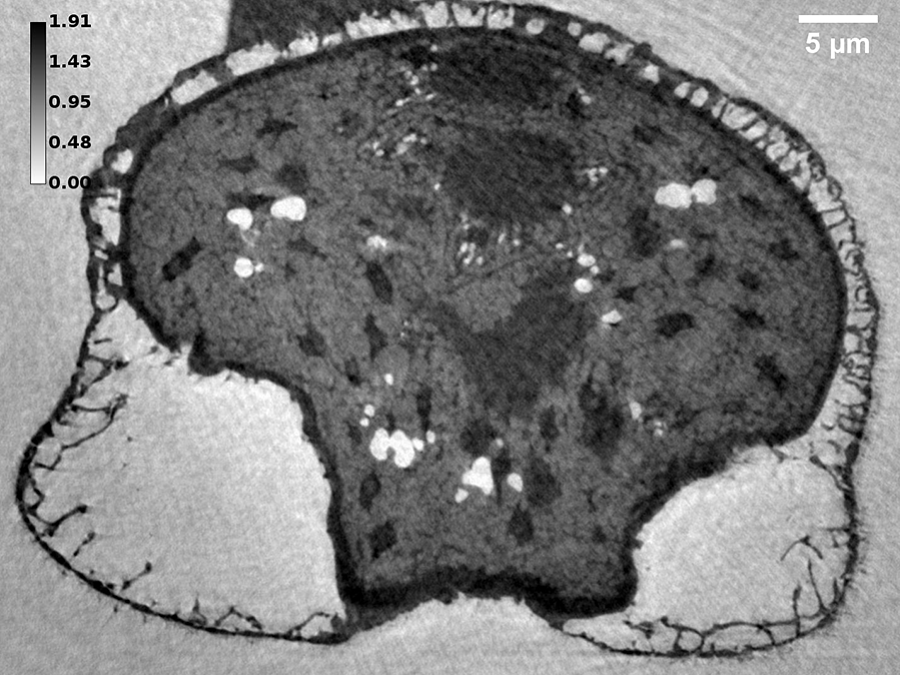HMC supports pioneering research on pollen nanofoam with data protocols
Pollen grains protect the genetic material of plants from environmental threats during reproduction. They are essential for plant survival. This is why even the earliest land plants developed a particularly tough outer wall for their pollen. Now, scientists at the National History Museum London (NHM) and the European Synchrotron Radiation Facility (ESRF) in Grenoble (France) have described for the first time a biological nanofoam structure on pine pollen that helped the trees survive several mass extinctions. The study has been published yesterday in the international journal Science Advances. The Helmholtz Metadata Collaboration provided support in the data publication process, ensuring it is easy for other researchers to benefit from the interdisciplinary value of the work.
The international team, which included pollen experts, materials scientists and physicists, studied pine pollen with advanced techniques including X-ray nanotomography and X-ray fluorescence nanoimaging at the. In doing so, it compared current material with fossil pollen from the NHM's collections. The data obtained in this way showed for the first time a nano-foam structure created by nature, which apparently protects extremely well against environmental influences. Conifers have been existing on Earth for 300 to 400 million years and they have survived several mass extinctions. The study could also help make properties of the nano foam available for human applications in the future.
A particular challenge was the processing and preparation of the very diverse data. “Describing your data with additional information, so called metadata, is about enabling someone else to understand what you did. As this was such an interdisciplinary project, that is where the impact comes from. We knew HMC could play a big role in supporting the study in making the methods as well as the data open for others to benefit from," says Dr Oonagh Mannix, one of the authors and now coordinator of HMC's Hub Matter. She adds: "This made the pollen study also a great test case for HMC. Because that is exactly what we want to achieve here: Making research data interoperable and reusable across disciplinary boundaries."
Links:
The full press release on the ESRF website
Top image: Reconstruction of a modern pine pollen specimen from X-ray nano-tomography measurements. Credits: Cojocaru, R. et al, Science Advances.
